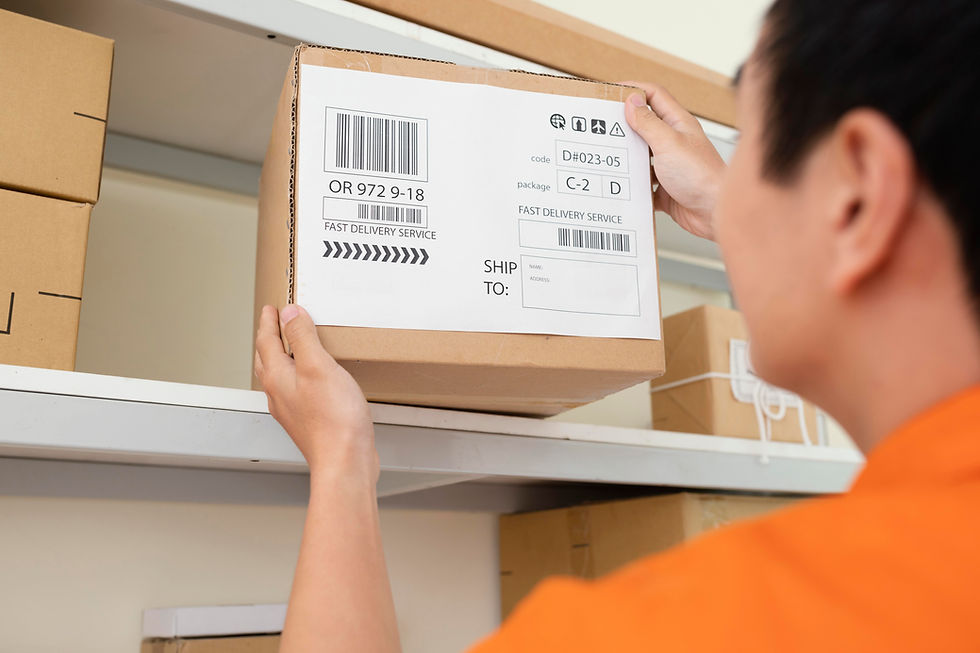Exploring Product Barcode Systems for Your Business
- info4830371
- 7 days ago
- 4 min read
When you’re running a small business or selling products online, getting your items ready for the market can feel overwhelming. One key step that often gets overlooked is choosing the right barcode system. Barcodes are more than just lines on a label - they are the backbone of efficient inventory management, sales tracking, and product identification. I want to share what I’ve learned about different types of barcode systems and how they can help your business thrive.
Barcodes make your products easy to scan, track, and sell. They reduce errors, speed up checkout, and improve your overall workflow. Whether you sell handmade crafts, packaged foods, or electronics, understanding barcode systems will give you a clear edge.
Understanding the Types of Barcode Systems
There are several types of barcode systems, each designed for specific uses and industries. Knowing the differences helps you pick the best fit for your products and business needs. Here are the main types you should know about:
1. UPC (Universal Product Code)
UPC barcodes are the most common in retail. They consist of 12 numeric digits and are widely used in the US and Canada. If you sell products in stores or online marketplaces, UPCs are often required. They help retailers scan your product quickly at checkout.
2. EAN (European Article Number)
EAN barcodes are similar to UPC but have 13 digits. They are used internationally, especially in Europe and Asia. If you plan to sell globally, EAN barcodes are a smart choice.
3. Code 39
This barcode type supports both numbers and letters. It’s often used in non-retail settings like warehouses, manufacturing, and government. Code 39 is flexible and easy to generate, making it great for internal tracking.
4. Code 128
Code 128 is a high-density barcode that can encode letters, numbers, and special characters. It’s popular in shipping and packaging because it can hold a lot of information in a small space.
5. QR Codes
QR codes are two-dimensional barcodes that can store much more data than traditional barcodes. They are scannable by smartphones and can link to websites, product details, or promotions. QR codes are perfect for marketing and customer engagement.

Each type has its strengths. For example, if you sell physical products in stores, UPC or EAN barcodes are essential. If you want to track inventory internally, Code 39 or Code 128 might be better. And if you want to connect with customers digitally, QR codes open exciting possibilities.
How to Choose the Right Barcode System for Your Business
Choosing the right barcode system depends on your product type, sales channels, and business goals. Here’s a simple guide to help you decide:
Retail Sales: Use UPC or EAN barcodes. These are recognized by most retailers and online platforms like Amazon and eBay.
Inventory Management: Consider Code 39 or Code 128. These barcodes are great for tracking stock and shipments.
Marketing and Engagement: Use QR codes to share product info, discounts, or videos with your customers.
Global Sales: EAN barcodes are better for international markets.
Small Batch or Handmade Products: You might start with QR codes or Code 39 for easy labeling.
Before you buy or generate barcodes, check the requirements of your sales platforms and retailers. Some marketplaces require you to have a GS1 barcode, which is a globally accepted standard. You can get these barcodes from trusted providers like product barcode systems.
How Barcodes Help Your Business Grow
Barcodes do more than just identify products. They streamline your entire business process. Here’s how:
Speed Up Checkout: Scanning barcodes is faster than typing product codes manually.
Reduce Errors: Barcodes minimize human mistakes in pricing and inventory.
Track Inventory: Know exactly how much stock you have and when to reorder.
Improve Customer Experience: Faster service and accurate pricing make customers happy.
Enable Online Sales: Many online platforms require barcodes to list products.
Support Marketing: QR codes can link customers to promotions or product stories.
For example, I once helped a small food business switch from handwritten labels to UPC barcodes. The owner saw faster sales processing and fewer stockouts within weeks. It made a big difference in their daily operations.

Tips for Implementing Barcode Systems Smoothly
Starting with barcodes might seem tricky, but it doesn’t have to be. Here are some practical tips to get you going:
Choose a Reliable Barcode Provider: Look for affordable, genuine barcodes from trusted sources like product barcode systems.
Understand Your Product Needs: Match the barcode type to your product size, packaging, and sales channels.
Use Quality Labels: Print barcodes on durable labels that won’t smudge or peel.
Test Your Barcodes: Scan your barcodes with different devices to ensure readability.
Train Your Team: Make sure everyone knows how to scan and handle barcodes properly.
Keep Records: Maintain a database of your barcodes linked to product details for easy reference.
By following these steps, you’ll avoid common pitfalls and enjoy the full benefits of barcode technology.
Moving Forward with Confidence
Barcodes are a simple yet powerful tool to help your business grow. They bring order, speed, and accuracy to your product management. Whether you’re just starting out or looking to improve your current system, exploring the types of barcode systems available is a smart move.
Remember, the right barcode system depends on your unique business needs. Take your time to research, ask questions, and choose a provider that supports your goals. With the right barcodes, you’ll be ready to face the market confidently and efficiently.
If you want to get started quickly, check out product barcode systems for affordable and genuine barcodes tailored for small businesses and online sellers. They make it easy to get your products market-ready and thrive in today’s digital space.
Embrace barcodes today and watch your business become more organized, professional, and successful!



Comments